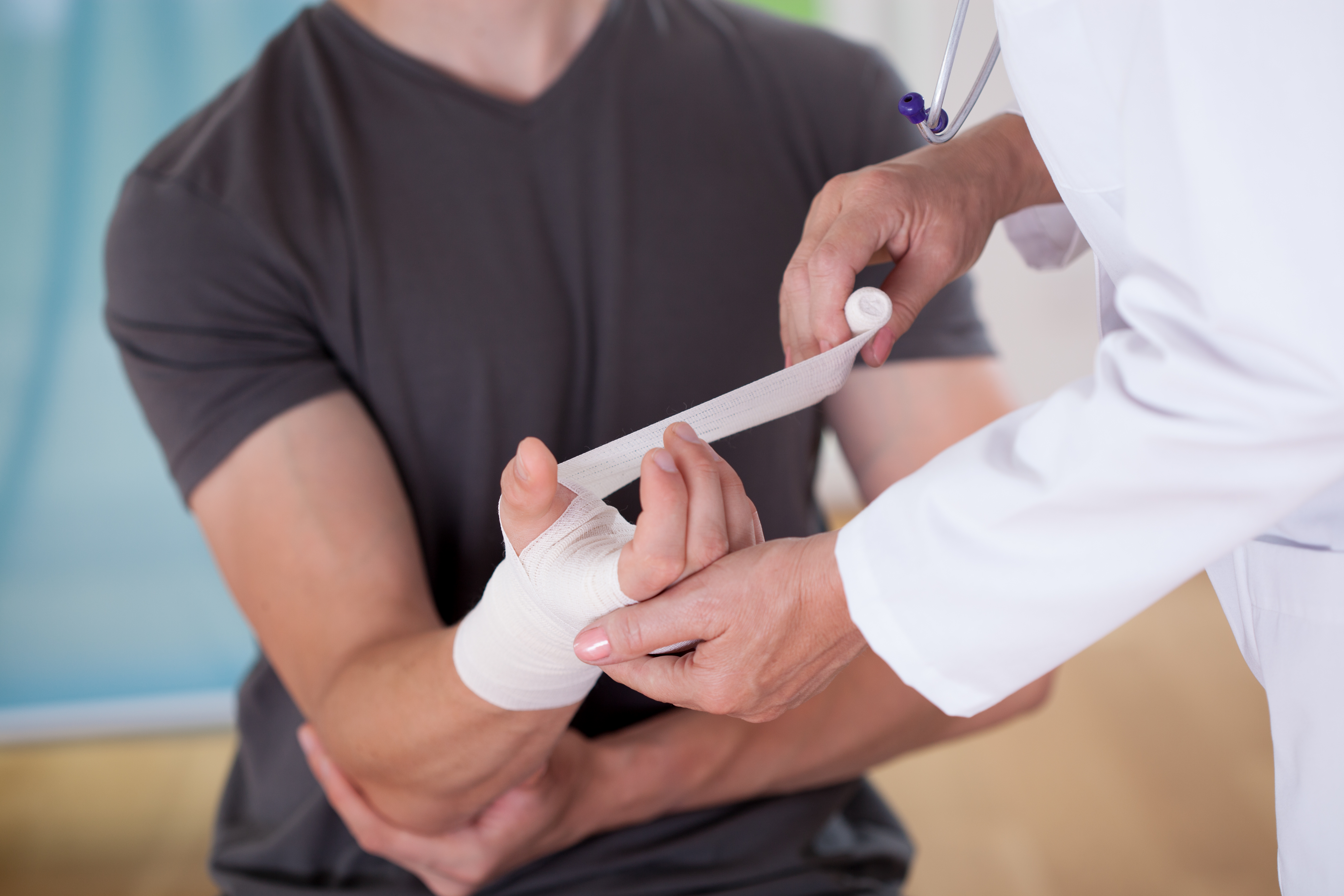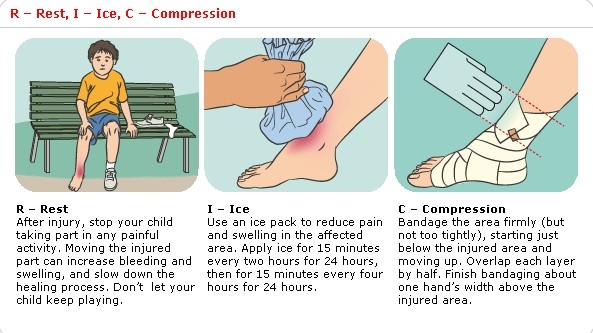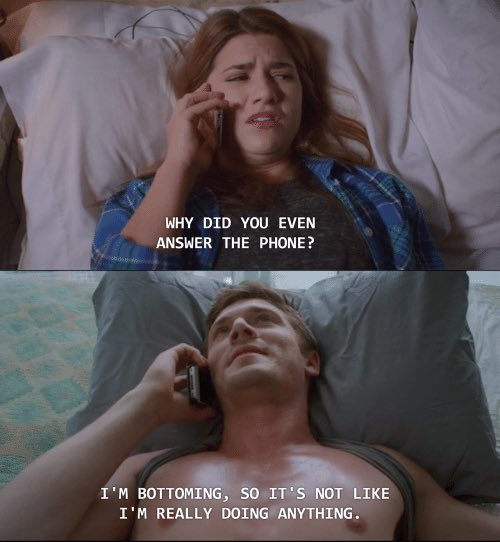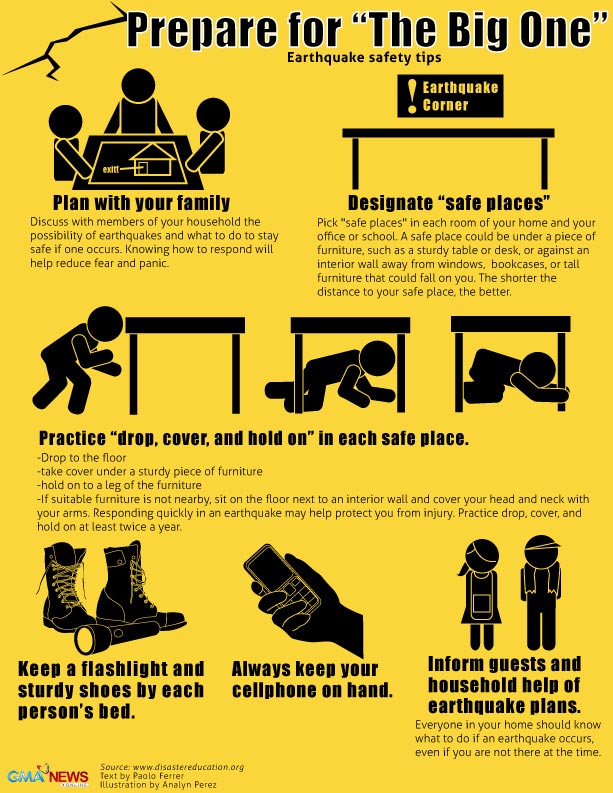Broken hand what to do. Broken Hand Symptoms, Causes, Diagnosis, and Treatment: A Comprehensive Guide
What are the symptoms of a broken hand? What causes a broken hand? How is a broken hand diagnosed and treated? Get all the answers in this comprehensive guide.
Understanding Broken Hand Injuries
A broken hand, also known as a hand fracture, occurs when one or more bones in the hand are broken due to trauma, such as an accident, fall, or contact sports. The bones that make up the hand are the metacarpals (long bones in the palm) and the phalanges (finger bones).
It’s important to differentiate a broken hand from a sprained hand, which involves an injury to the muscle, tendon, or ligament rather than the bone. While these injuries can have similar symptoms, the treatment approaches differ.
Symptoms of a Broken Hand
The most common symptoms of a broken hand include:
- Severe pain
- Tenderness
- Swelling
- Bruising
- Difficulty moving fingers
- Numbness or stiffness in the fingers
- Worsening pain with movement or gripping
- Crooked finger(s)
- Audible snap at the time of injury
It’s important to note that the severity of these symptoms can vary depending on the extent of the injury.

Causes of a Broken Hand
A broken hand is typically caused by physical trauma, such as:
- Direct blow to the hand
- Heavy force or impact
- Crushing of the hand
- Twisting of the hand
These types of injuries can occur in various scenarios, including:
- Motor vehicle crashes
- Falls
- Contact sports (e.g., hockey, football)
- Punching
Diagnosing a Broken Hand
If you suspect you have a broken hand, it’s essential to seek medical attention immediately. The diagnostic process typically involves the following steps:
- Physical examination: The doctor will assess your hand for signs of swelling, bruising, and other indications of injury.
- Medical history: The doctor will gather information about your injury, any underlying conditions, and previous hand injuries.
- X-ray: An X-ray imaging test will be used to identify the location and direction of the break, as well as rule out other potential conditions.
Treatment for a Broken Hand
The primary goal of treatment for a broken hand is to ensure proper healing and restore normal hand function. The most common treatment options include:

- Immobilization: The hand may be immobilized using a cast, splint, or brace to limit unnecessary movement and promote proper bone alignment.
- Medication: Pain medication and anti-inflammatory drugs may be prescribed to manage pain and swelling.
- Surgery: If the bones are severely misaligned or the injury is complex, surgery may be necessary to realign the bones and stabilize the hand.
It’s important to follow the treatment plan prescribed by your healthcare provider to ensure the best possible outcome for your broken hand.
Can a Broken Hand Heal on Its Own?
While a broken hand can potentially heal on its own without proper treatment, this is not recommended. Without the right medical care, the bones may not align properly, leading to a condition called a malunion. This can interfere with the normal function of the hand and make it difficult to perform daily activities.
If the bones are misaligned, surgery may be necessary to realign them, which can prolong the recovery process. Therefore, it’s crucial to seek medical attention as soon as possible to ensure the best possible outcome for your broken hand.

Preventing Broken Hands
While it’s not always possible to prevent a broken hand, there are some steps you can take to reduce the risk:
- Wear protective gear, such as gloves, when engaging in contact sports or activities with a high risk of hand injuries.
- Be cautious when performing tasks that could lead to a fall or direct blow to the hand.
- Maintain good bone health by getting enough calcium, vitamin D, and weight-bearing exercise.
By taking these precautions and seeking prompt medical attention if you suspect a broken hand, you can increase your chances of a full and speedy recovery.
Conclusion
A broken hand is a serious injury that requires prompt medical attention. Understanding the symptoms, causes, and treatment options can help you make informed decisions about your healthcare and ensure the best possible outcome for your injury. Remember, seeking professional medical care is crucial for the proper healing and restoration of your hand’s function.
Broken Hand Symptoms, Causes, Diagnosis, and Treatment
A broken hand happens when one or more bones in your hand break as a result of an accident, fall, or contact sports. The metacarpals (long bones of the palm) and the phalanges (finger bones) make up the bones in your hand.
This injury is also known as a fractured hand. Some people may also refer to it as a break or crack.
To be diagnosed as a broken hand, the bone must be affected — one of the bones may be broken into multiple pieces, or several bones may be affected. This is different from a sprained hand, which is the result of an injury to the muscle, tendon, or ligament.
If you suspect you have a broken hand, see a doctor immediately. They can diagnose and treat your injury. The sooner you get medical attention, the better your hand can heal.
The symptoms of a broken hand depend on the severity of your injury. The most common symptoms are:
- severe pain
- tenderness
- swelling
- bruising
- difficulty moving fingers
- numb or stiff fingers
- worsening pain with movement or gripping
- crooked finger(s)
- audible snap at time of injury
Sometimes, it can be difficult to tell if your hand is broken or sprained. These injuries can cause similar symptoms, even though each one is different.
These injuries can cause similar symptoms, even though each one is different.
While a broken hand involves the bone, a sprained hand involves a ligament. This is the band of tissue that connects two bones in a joint. A sprain occurs when a ligament is stretched or torn.
Often, this happens when you fall on an outstretched hand. It may also happen if a joint in your hand twists out of place.
A sprained hand may cause the following symptoms:
- pain
- swelling
- bruising
- inability to use the joint
If you know what injury caused your symptoms, you may be able to pinpoint what’s going on. However, the best way to know if your hand is broken or sprained is to see a doctor.
A hand fracture is caused by physical trauma, such as:
- direct blow from an object
- heavy force or impact
- crushing of the hand
- twisting of the hand
These injuries can happen during scenarios like:
- motor vehicle crashes
- falls
- contact sports, like hockey or football
- punching
If you think you have a broken hand, see a doctor immediately.
But until you can seek medication attention, there are things you can do to care for your hand. These include the following first aid procedures:
- Avoid moving your hand. Try your best to immobilize your hand. If a bone has moved out of place, don’t attempt to realign it.
- Apply ice. To reduce pain and swelling, carefully apply an ice pack or cold compress to your injury. Always wrap the ice pack in a clean cloth or towel first.
- Stop the bleeding.
The goal of broken bone first aid is to limit further injury. It can also help minimize pain and improve your recovery outlook.
If you’re bleeding, you likely have an open fracture, meaning a bone is sticking out. In this case, go to the ER right away. Until you can get help, you can stop the bleeding by applying pressure and using a clean cloth or bandage.
Visit a doctor as soon as you think you’ve broken your hand.
It’s especially important to see a doctor if you have:
- difficulty moving your fingers
- swelling
- numbness
Can a broken hand heal on its own?
A broken hand can heal by itself. But without proper treatment, it’s more likely to heal incorrectly.
But without proper treatment, it’s more likely to heal incorrectly.
Specifically, the bones might not line up properly. This is known as a malunion. It can interfere with the normal function of your hand, making it difficult to do daily activities.
If the bones are misaligned, you’ll need surgery to realign them. This can prolong the recovery process even further, so it’s important to receive the right treatment from the start.
To diagnose a broken hand, a doctor will use several tests. These include:
Physical examination
A doctor will check your hand for swelling, bruising, and other signs of damage. They might also examine the surrounding areas, like your wrist and arm. This will help them determine the severity of your injury.
Medical history
This allows the doctor to learn about any underlying conditions you may have. For example, if you have osteoporosis or a previous hand injury, they can understand what may have contributed to your injury.
If you recently been in a crash, they’ll ask about what happened and how your hand was injured.
X-ray
A doctor will have you get an X-ray. They will use this imaging test to identify the location and direction of the break.
It can also help the rule out other possible conditions, like a sprain.
The purpose of treatment is to help your hand heal correctly. With proper medical help, your hand will be more likely to return to its normal strength and function. Treatment options include:
Cast, splint, and brace
Immobilization limits unnecessary movement, which promotes proper healing. It also ensures that your bones line up correctly.
To immobilize your hand, you’ll wear a cast, splint, or brace. The best option depends on your specific injury.
Metacarpal fractures are often difficult to effectively mobilize and will likely require surgery.
Pain medication
A doctor might have you take over-the-counter medication to control pain. However, if you have a more serious injury, they might prescribe stronger pain medication.
However, if you have a more serious injury, they might prescribe stronger pain medication.
They’ll also recommend the appropriate dose and frequency. Be sure to follow their directions.
Surgery
A broken hand usually doesn’t require surgery. But it might be necessary if your injury is severe.
You may need metal screws or pins to keep your bones in place. In certain cases, you might also need a bone graft.
Surgery is likely necessary if your injury involves:
- an open fracture, meaning the bone has pierced the skin
- a completely crushed bone
- a break extending to the joint
- loose bone fragments
Another common cause of surgery is if the bone is rotated, which can rotate your fingers as well and affect hand function.
You’ll also need surgery if your hand was already immobilized but didn’t heal correctly.
In general, broken hand recovery takes 3 to 6 weeks. You’ll have to wear the cast, splint, or brace during the entire time.
The total healing time depends on several factors, including:
- your overall health
- exact location of the break
- severity of your injury
Your doctor might have you start gentle hand therapy after 3 weeks. This can help regain strength and decrease stiffness in your hand.
You may also be asked to continue therapy after your cast has been removed.
To monitor your progress, your doctor will order multiple X-rays in the weeks after your injury. They can explain when it’s safe to return to normal activities.
If you have a broken hand, a doctor is the best person to diagnose and treat it. They’ll have you wear a cast, splint, or brace to keep your hand still. This ensures that the bone heals correctly.
As you recover, take it easy and let your hand rest. If you experience new symptoms, or if the pain doesn’t go away, let your doctor know.
Broken Hand Symptoms, Causes, Diagnosis, and Treatment
A broken hand happens when one or more bones in your hand break as a result of an accident, fall, or contact sports. The metacarpals (long bones of the palm) and the phalanges (finger bones) make up the bones in your hand.
The metacarpals (long bones of the palm) and the phalanges (finger bones) make up the bones in your hand.
This injury is also known as a fractured hand. Some people may also refer to it as a break or crack.
To be diagnosed as a broken hand, the bone must be affected — one of the bones may be broken into multiple pieces, or several bones may be affected. This is different from a sprained hand, which is the result of an injury to the muscle, tendon, or ligament.
If you suspect you have a broken hand, see a doctor immediately. They can diagnose and treat your injury. The sooner you get medical attention, the better your hand can heal.
The symptoms of a broken hand depend on the severity of your injury. The most common symptoms are:
- severe pain
- tenderness
- swelling
- bruising
- difficulty moving fingers
- numb or stiff fingers
- worsening pain with movement or gripping
- crooked finger(s)
- audible snap at time of injury
Sometimes, it can be difficult to tell if your hand is broken or sprained. These injuries can cause similar symptoms, even though each one is different.
These injuries can cause similar symptoms, even though each one is different.
While a broken hand involves the bone, a sprained hand involves a ligament. This is the band of tissue that connects two bones in a joint. A sprain occurs when a ligament is stretched or torn.
Often, this happens when you fall on an outstretched hand. It may also happen if a joint in your hand twists out of place.
A sprained hand may cause the following symptoms:
- pain
- swelling
- bruising
- inability to use the joint
If you know what injury caused your symptoms, you may be able to pinpoint what’s going on. However, the best way to know if your hand is broken or sprained is to see a doctor.
A hand fracture is caused by physical trauma, such as:
- direct blow from an object
- heavy force or impact
- crushing of the hand
- twisting of the hand
These injuries can happen during scenarios like:
- motor vehicle crashes
- falls
- contact sports, like hockey or football
- punching
If you think you have a broken hand, see a doctor immediately.
But until you can seek medication attention, there are things you can do to care for your hand. These include the following first aid procedures:
- Avoid moving your hand. Try your best to immobilize your hand. If a bone has moved out of place, don’t attempt to realign it.
- Apply ice. To reduce pain and swelling, carefully apply an ice pack or cold compress to your injury. Always wrap the ice pack in a clean cloth or towel first.
- Stop the bleeding.
The goal of broken bone first aid is to limit further injury. It can also help minimize pain and improve your recovery outlook.
If you’re bleeding, you likely have an open fracture, meaning a bone is sticking out. In this case, go to the ER right away. Until you can get help, you can stop the bleeding by applying pressure and using a clean cloth or bandage.
Visit a doctor as soon as you think you’ve broken your hand.
It’s especially important to see a doctor if you have:
- difficulty moving your fingers
- swelling
- numbness
Can a broken hand heal on its own?
A broken hand can heal by itself. But without proper treatment, it’s more likely to heal incorrectly.
But without proper treatment, it’s more likely to heal incorrectly.
Specifically, the bones might not line up properly. This is known as a malunion. It can interfere with the normal function of your hand, making it difficult to do daily activities.
If the bones are misaligned, you’ll need surgery to realign them. This can prolong the recovery process even further, so it’s important to receive the right treatment from the start.
To diagnose a broken hand, a doctor will use several tests. These include:
Physical examination
A doctor will check your hand for swelling, bruising, and other signs of damage. They might also examine the surrounding areas, like your wrist and arm. This will help them determine the severity of your injury.
Medical history
This allows the doctor to learn about any underlying conditions you may have. For example, if you have osteoporosis or a previous hand injury, they can understand what may have contributed to your injury.
If you recently been in a crash, they’ll ask about what happened and how your hand was injured.
X-ray
A doctor will have you get an X-ray. They will use this imaging test to identify the location and direction of the break.
It can also help the rule out other possible conditions, like a sprain.
The purpose of treatment is to help your hand heal correctly. With proper medical help, your hand will be more likely to return to its normal strength and function. Treatment options include:
Cast, splint, and brace
Immobilization limits unnecessary movement, which promotes proper healing. It also ensures that your bones line up correctly.
To immobilize your hand, you’ll wear a cast, splint, or brace. The best option depends on your specific injury.
Metacarpal fractures are often difficult to effectively mobilize and will likely require surgery.
Pain medication
A doctor might have you take over-the-counter medication to control pain. However, if you have a more serious injury, they might prescribe stronger pain medication.
However, if you have a more serious injury, they might prescribe stronger pain medication.
They’ll also recommend the appropriate dose and frequency. Be sure to follow their directions.
Surgery
A broken hand usually doesn’t require surgery. But it might be necessary if your injury is severe.
You may need metal screws or pins to keep your bones in place. In certain cases, you might also need a bone graft.
Surgery is likely necessary if your injury involves:
- an open fracture, meaning the bone has pierced the skin
- a completely crushed bone
- a break extending to the joint
- loose bone fragments
Another common cause of surgery is if the bone is rotated, which can rotate your fingers as well and affect hand function.
You’ll also need surgery if your hand was already immobilized but didn’t heal correctly.
In general, broken hand recovery takes 3 to 6 weeks. You’ll have to wear the cast, splint, or brace during the entire time.
The total healing time depends on several factors, including:
- your overall health
- exact location of the break
- severity of your injury
Your doctor might have you start gentle hand therapy after 3 weeks. This can help regain strength and decrease stiffness in your hand.
You may also be asked to continue therapy after your cast has been removed.
To monitor your progress, your doctor will order multiple X-rays in the weeks after your injury. They can explain when it’s safe to return to normal activities.
If you have a broken hand, a doctor is the best person to diagnose and treat it. They’ll have you wear a cast, splint, or brace to keep your hand still. This ensures that the bone heals correctly.
As you recover, take it easy and let your hand rest. If you experience new symptoms, or if the pain doesn’t go away, let your doctor know.
What to do if you break your arm? – useful articles from specialists
Neither adults nor children are immune from bruises, abrasions, dislocations and even fractures. The causes of injury can be excessive physical exertion, an accidental fall, a blow with a heavy object, an accident, and so on. If trouble has happened to you or your loved ones, there is a suspicion of a fracture, the first step is to determine the severity of the injury. You can’t do without the help of the medical staff. Any self-diagnosis is fraught with serious consequences.
The causes of injury can be excessive physical exertion, an accidental fall, a blow with a heavy object, an accident, and so on. If trouble has happened to you or your loved ones, there is a suspicion of a fracture, the first step is to determine the severity of the injury. You can’t do without the help of the medical staff. Any self-diagnosis is fraught with serious consequences.
Depending on the type of damage to the hand, there are two types of fracture:
- Open – there is a rupture of tissues, skin, there is bleeding.
- Closed – no bleeding, the skin remains intact.
When the integrity of one bone is broken, we are dealing with an isolated fracture. If there is a fracture of several bones, then we are talking about a multiple fracture.
Depending on the complexity of the injury, the absence or presence of displacement, the signs of a fracture of the hand may vary significantly. However, the presence of a fracture can be determined by specific signs.
Among its main clinical manifestations are:
- severe pain;
- hemorrhage;
- swelling, edema at the site of injury;
- crunching of bone fragments;
- deformation of the injured area;
- excessive mobility of the injured part of the arm or inability to move it;
- fever;
- pale skin;
- nausea, dizziness;
- coldness of the extremity.
If you have the above symptoms, be sure to call an ambulance or go to the nearest emergency room. An x-ray will help clarify the diagnosis. Having studied the picture, the doctor will be able to determine the nature of the injury, the presence of bone fragments, the integrity of the joint.
What should I do if I break my arm?
When an injury is accompanied by bleeding, first aid is needed on the spot. Any delay can lead to terrible results. Therefore, first of all, you should stop the bleeding, and then deal with the fracture. How to do it? Wash the wound with hydrogen peroxide, apply a gauze bandage to the damaged surface. In the presence of severe bleeding, it is imperative to apply a tourniquet (in winter for half an hour, in summer for 2 hours). Important to know: if the blood is brightly colored and flows out intensively, you are dealing with an injury to the arterial vessels. The tourniquet must be applied above the fracture. In the event that the blood is thick and dark, you have a vein injury. A tourniquet is applied below the injured area.
How to do it? Wash the wound with hydrogen peroxide, apply a gauze bandage to the damaged surface. In the presence of severe bleeding, it is imperative to apply a tourniquet (in winter for half an hour, in summer for 2 hours). Important to know: if the blood is brightly colored and flows out intensively, you are dealing with an injury to the arterial vessels. The tourniquet must be applied above the fracture. In the event that the blood is thick and dark, you have a vein injury. A tourniquet is applied below the injured area.
If there is a suspicion of a dislocation, in no case should you try to set it yourself. Such work can only be entrusted to an experienced doctor.
If you decide to transport the victim to the nearest hospital, be sure to follow the rules for transporting a broken limb. We are talking about the correct fixation of the hand, with the help of sticks, fabric, cardboard – everything that can play the role of a tire.
Don’t forget to remove bracelets and rings from your arm, because jewelry interferes with natural circulation, and after swelling of the limbs, they will have to be removed using special tools.
Never do this if someone has a broken arm:
- Do not try to return the injured limb to its normal position.
- Do not transport an injured person without securing the injured arm.
- Do not try to get painkillers to drink or ointments to be applied to the bruised area. A sedative can be given when the victim is in a state of stress, shock.
- Do not splint unless you have an idea of how to do it correctly. Better call an ambulance.
- Don’t be idle! Even if there is a slight swelling of the tissues, an x-ray should be taken and a full consultation with a traumatologist should be obtained.
Violating such prohibitions, you run the risk of significantly worsening the condition of the victim.
And most importantly, forget about any self-treatment. Practice shows that the slightest deformation, minimal displacement entails shortening of the arm and other complications.
The subsequent treatment and recovery depend on how professionally the first aid is provided for a broken limb.
How to get rid of arm pain after an injury | Relieve pain after a fracture or sprain of the wrist
Injuries, in whatever form they are received, often cause sharp and sharp pain. Depending on the severity of the fracture, pain can also be accompanied by various hematomas, an increase in the volume of the limb (due to the accumulation of fluid), as well as anatomical deformity. When injured, it is extremely important to properly provide first aid in order to alleviate pain during the injury, as well as to minimize the likelihood of complications in the future.
Is it always necessary to consult a doctor after an injury?
Many patients after an injury, if it is not a fracture of course, are in no hurry to see a doctor and ask the question: “Is it necessary to visit a traumatologist after an injury?” Yuriy Forosenko – orthopedist-traumatologist of the Kyiv city polyclinic No. 17, claims:
“Seeing a doctor after an injury is necessary for any type of injury, whether it is a sprain or a slight dislocation.
Usually, the doctor performs an x-ray examination and gives a number of recommendations that must be followed by the patient for a speedy recovery. If you are unable to get to the nearest trauma center or department on your own, call an ambulance. If you feel that the injury is serious, try to unload the damaged area as much as possible: do not step on your foot, or, if your arm was injured, try to securely fix it in a static position.
Even if at first glance the injury seems insignificant to you, do not be lazy and spend a little time consulting with a traumatologist, because in the future this will significantly shorten the rehabilitation period and minimize the likelihood of complications after an injury.
Hand injuries. Types of wrist injuries
Absolutely anyone can injure a hand. To do this, it is enough to accidentally fall and land unsuccessfully, make a sharp grab or put an excessive load on the joint. Professional tennis players or golfers are most susceptible to injuries, however, ordinary people, unfortunately, are not immune from this unpleasant incident.
Hand injury treatment will depend on the type and extent of damage to the upper limb. There are several types of hand injuries in traumatology:
- Fracture;
- Contusion;
- Dislocation;
- Pressure;
- Open wound;
- Torn ligaments;
- Tendon rupture.
fractures
A fracture is perhaps the most unpleasant injury that requires a long rehabilitation period. This type of injury is accompanied by severe acute pain, instant swelling and sometimes a visual change in the anatomical shape of the hand. If you have damaged a limb in this way, try to immobilize it as much as possible, since excessive movements can lead to displacement of bone fragments, if any. In case of a fracture, it is necessary to immobilize the wrist as soon as possible with a bandage or splint and get to the nearest emergency room.
bruises
When bruised, several ligaments and muscles are injured at once, therefore an injury of this nature is quite painful.:max_bytes(150000):strip_icc()/wristpainfinal-01-5c45e56c4cedfd0001871f4e.png) A bruise is accompanied by swelling, hematomas, pain and local warming of the damaged area of the limb. Also, as with a fracture, a bruise requires prompt cooling and immobilization of the hand. To exclude a fracture in the nearest traumatology department, it is necessary to take an x-ray.
A bruise is accompanied by swelling, hematomas, pain and local warming of the damaged area of the limb. Also, as with a fracture, a bruise requires prompt cooling and immobilization of the hand. To exclude a fracture in the nearest traumatology department, it is necessary to take an x-ray.
dislocations
Dislocations are often the result of an unsuccessful fall on the arm. In such a case, the brush, as a rule, is displaced in the back direction. With such an injury, the patient is unable to move the limb, experiences severe pain, and a hematoma appears. In case of dislocation, it is necessary to immobilize the wrist with a special splint. Under no circumstances should you try to straighten the dislocation yourself. Treatment should be carried out exclusively by a traumatologist directly.
compression
This type of injury involves squeezing the soft tissues of the arm, which was carried out by any heavy load. Accompanied by hematoma and edema. Occasionally, ligament ruptures are possible. If your hand is pressed by some heavy object, you should try to give it an elevated position and fix it, as well as apply a cold compress.
Occasionally, ligament ruptures are possible. If your hand is pressed by some heavy object, you should try to give it an elevated position and fix it, as well as apply a cold compress.
open wounds
A wound, as such, can be either independent or in addition to, for example, an open fracture or any other injury to a limb. Wounds are usually chopped, stab or cut. In the case of chopped and cut wounds, it is necessary to apply a special bandage in order to stop the bleeding, and also treat the damaged area with an antibacterial agent. A puncture wound tends to bleed less, but the risk of infection is slightly higher, so it is very important to treat the puncture wound with an antiseptic and apply surgical sutures as soon as possible.
Torn ligaments and tendons
If you have been subjected to a strong blow or an unfortunate fall, you may have a torn ligament or even a tendon. Usually in such cases, unbearable pain occurs, and the wrist joint becomes unstable. The local temperature also rises, and the soft tissues swell. Sometimes internal bleeding is possible. In case of rupture of ligaments or tendons, it is necessary to immobilize the limb and remove the pain shock with the help of an analgesic. In the nearest emergency room, a plaster or splint is applied.
The local temperature also rises, and the soft tissues swell. Sometimes internal bleeding is possible. In case of rupture of ligaments or tendons, it is necessary to immobilize the limb and remove the pain shock with the help of an analgesic. In the nearest emergency room, a plaster or splint is applied.
As you have already noticed, there are quite a lot of injuries to the upper extremities, so the treatment of the hand after an injury will depend on what type of damage has touched you.
How to get rid of pain in the arm after an injury?
Are there any universal methods that help to effectively eliminate pain in the hand after injury? Of course, in each case, everything is individual and the rehabilitation period depends on the age, physique of the patient and many other factors. If we talk about any general method – the first thing that will help you get rid of pain in a damaged joint is a cold compress. Never treat a bruise or dislocation with iodine, warming ointments, or any other balms of unknown origin. This will only aggravate the situation, provoke an increase in blood circulation and increase swelling.
This will only aggravate the situation, provoke an increase in blood circulation and increase swelling.
To quickly get rid of pain after an injury, the following three points must be observed:
- Cold compresses only;
- Elevated position;
- Immobilization of the injured area.
The first thing to do to relieve the pain of an injury is to apply a cold compress. This will help stop bleeding, if any, and relieve swelling. Next, you need to immobilize (i.e. fix) the limb in order to save it from unnecessary motor activity, which can only harm. It is also recommended to keep the hand in an elevated position so as not to disturb the outflow of blood. If necessary, the doctor may prescribe analgesic, anti-inflammatory and other drugs that will help in eliminating pain, swelling and contribute to the speedy resorption of hematomas.
After providing first aid, it is recommended to go to the nearest traumatology department as soon as possible in order to have an examination, establish a diagnosis, and then apply a splint, plaster or splint and get competent advice from a doctor. The rehabilitation period also directly depends on the nature and extent of the injury. However, remember that by strictly following all the rules prescribed by the doctor, you will be able to shorten the rehabilitation period as much as possible.
The rehabilitation period also directly depends on the nature and extent of the injury. However, remember that by strictly following all the rules prescribed by the doctor, you will be able to shorten the rehabilitation period as much as possible.
Bandage on the wrist joint with a hand injury
No matter what type of injury you’re facing, the first thing you’ll need is a wrist brace. This will help to fix the damaged part of the body in a static position, will be an excellent prevention of complications, and will also speed up the rehabilitation period. There are various types of wrist braces, including:
- Orthoses/Splints. They are used for enhanced immobilization of the joint, effectively unload the hand and have a good compression effect;
- Tires. Used for the wrist and fingers. Perfectly fix the damaged area in a stationary state;
- Bandages. They are applicable both in the early post-traumatic period and throughout the entire rehabilitation period.


 Usually, the doctor performs an x-ray examination and gives a number of recommendations that must be followed by the patient for a speedy recovery. If you are unable to get to the nearest trauma center or department on your own, call an ambulance. If you feel that the injury is serious, try to unload the damaged area as much as possible: do not step on your foot, or, if your arm was injured, try to securely fix it in a static position.
Usually, the doctor performs an x-ray examination and gives a number of recommendations that must be followed by the patient for a speedy recovery. If you are unable to get to the nearest trauma center or department on your own, call an ambulance. If you feel that the injury is serious, try to unload the damaged area as much as possible: do not step on your foot, or, if your arm was injured, try to securely fix it in a static position.